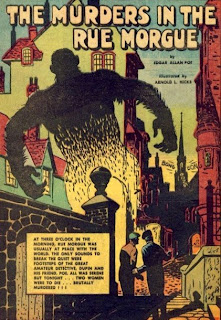Sumer is icumin in,
Lhude sing Goddamn;
Broileth heat, and sweateth feet
In beachward traffic jam,
Creepeth grubs and loseth Cubs
For want of a grand slam.
Singeth all Goddamn.
This promises to be a miserable summer.
The season has always been my least favorite — for many reasons, including excessive temperature and humidity, bugs and snakes, susceptibility to sun poisoning, and not being able to swim.
There’s a simple solution. Stay inside and do stuff. Reading, writing, painting, music are all possible pasttimes during the summer, thanks to perhaps the best invention ever, air conditioning. And ice cream. But what about the other ways to chill out?
For me, chilling out is best accomplished in the company of good friends. Unfortunately, many of my friends go away for most or all of the summer. Goddamn! That leaves me to chill out with my teevee, usually a boon companion because it brings sports into my home so I don’t have to swelter or freeze or battle swarms of fans hellbent on making a trip to the sports venue a perilous quest worthy of John Bunyan’s most misanthropic imaginings.
But summer is slim sports pickings. No football. No college basketball. No Olympics or World Cup most years (although the Women’s World Cup will be held this year, it threatens to be eclipsed by the venally tiresome FIFA scandal). In the past, I’ve been reduced to watching golf, but without Tiger on the prowl, it’s just a bunch of doughy guys named Chip or Bubba whacking away on chemically fluoresced surfaces while announcers whisper as if they were reporting on a Vatican beatification ceremony. (Don’t even mention the grunting boredom of tennis,)
But wait — what about baseball?
I love baseball! It was the first major league sport I attended (the Milwaukee Braves at County Stadium, a zillion years ago), the minor league sport I’ve enjoyed forever (the Appleton then Fox City Foxes, the Durham Bulls), a little league sport I've actually coached (a haplessly sweet group of eight-year-olds on Okinawa), and the inherited sports fandom that has united my family in shared, dispiriting reality checks, every year. Goddamn: we are Chicago Cubs fans.
But wait — aren’t the Cubs doing pretty well this year?
Yes indeed. And that’s this summer’s big problem — raised expectations that will surely be dashed against the ivy-covered walls of Wrigley Field. We Cubs fans have been here before. Well, not very frequently: there have been only a few promising seasons in my lifetime, all destroyed by September swoons or October collapses. I remember well the 1998 season, just to give an example: my father (a life-long Cubs fan and bleachers-seat witness to the Babe’s ‘called’ home run) really thought he’d see a World Series victory in his lifetime (that would be a big and sad ‘no'). Although he had suffered a series of strokes and napped a lot, Dad could will himself alert to watch the great (albeit golf-course-level chemically enhanced) homerun race featuring Cub Sammy Sosa, plus the team’s pursuit of the Wild Card. Unfortunately, Mark McGuire out-chemmed Sosa, and in the fight for the pennant, the Cubs were swept by the turncoat (to us geriatric Wisconsin baseballers) ‘Atlanta Braves.’
My dad was really devastated, as he realized that the Cubs would probably not win when he was alive to celebrate (Dad died in 2000). I thought I’d carry on my family’s hopes but, honestly, I no longer think that the Cubs will win in my lifetime, either. That’s why the 2015 team’s early season success is fraught with anxiety rather than pumped with anticipation: the more early victories, the more heartbreaking losses to come.
Other baseball curses, like the Curse of the Bambino, have been dispelled when the benighted team finally won. I fear that the Curse of the Goat will stick to Cubs fans like summer humidity and no-see'ums stick to sweaty skin. Moreover, WGN no longer regularly carries Cubs games, so even if I were foolish enough to want to watch my team toy with a winning season, I can’t on any regular basis.
So bah, humbug, and sing you all goddamn until friends return, football begins, heat abates, leaves turn, Christmas is closer than we think, and the Cubs officially are out of the post-season. Until then, stay off my lawn.




































